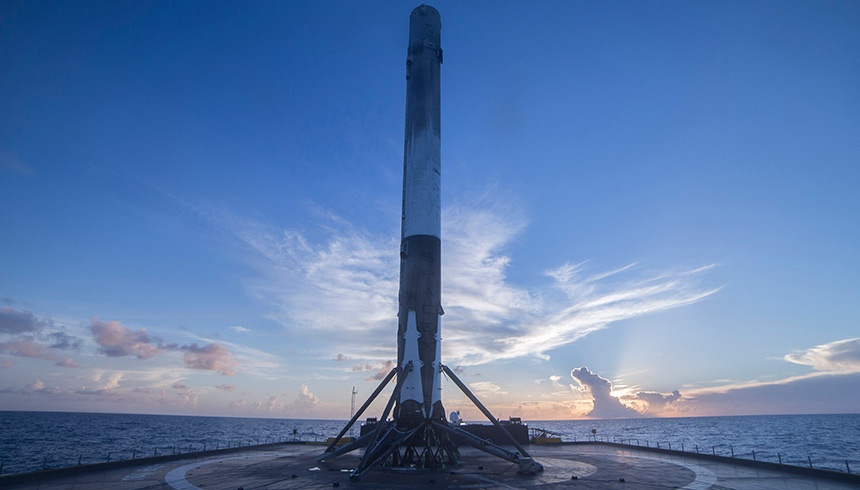Rise of reusable rockets signals a new age of spaceflight

The era of reusable rockets is poised for liftoff.
As of December 7, the aerospace company SpaceX had reported six successful landings — two on land and four at sea — of its reusable Falcon 9 rocket. The August 14 launch of one of the rockets from Cape Canaveral Air Force Station in Florida delivered a commercial communications satellite into orbit around the Earth.
Reusable rockets could make future spaceflights cheaper and more efficient. Typically, rocket stages, which house the engines, drop off once their fuel is spent and are lost at sea. But the first stage of SpaceX’s two-stage rocket makes a controlled descent once the second stage detaches to deliver the payload into orbit.
In the August 14 mission, engines blaze to slow the first stage down as it nears the landing zone, and four slender legs deploy to help it stand (shown below on a sea barge). SpaceX has yet to reuse any of its recovered Falcon 9 stages but plans to in early 2017.
Blue Origin, a rocket company, relaunched and landed on firm ground the same rocket booster of its reusable New Shepard spacecraft five times since November 2015. A capsule atop the booster is designed to ferry paying passengers to suborbital space, an easier goal than reaching orbit, perhaps as early as 2018.
This year also brought setbacks: Two sea landings of Falcon 9 rockets failed, and in September, one exploded in a fireball on its Florida launchpad during routine prelaunch tests (SN Online: 9/1/16).